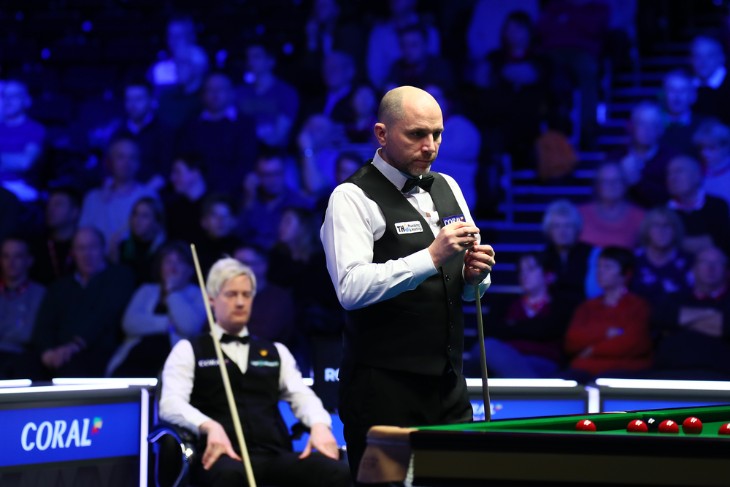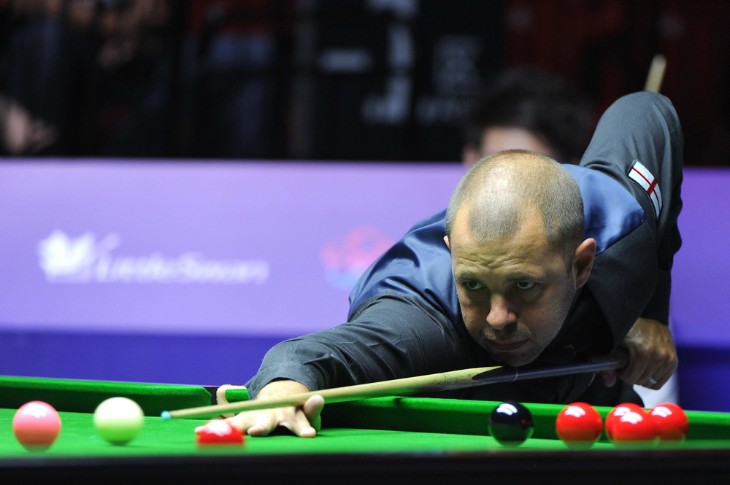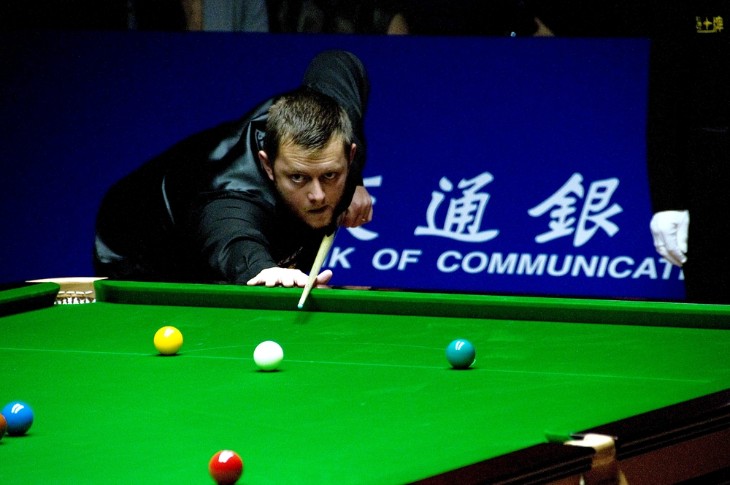Snooker, a game steeped in history and skill, is more than a test of mental acumen and physical prowess. It's a playground where physics and geometry come to life, offering a fascinating glimpse into how these scientific principles shape every shot. "The Physics and Geometry of Snooker: A Deep Dive" is your gateway to understanding the intricate dance of science behind this beloved game.
This article is tailored to make complex concepts easily accessible, ensuring anyone with an eighth-grade education level or above can grasp the wonders of snooker's science.
The Physics of Snooker: Understanding the Forces at Play
The Role of Friction and Spin in Snooker
In snooker, friction and spin play key roles. Let's break down how they affect the game.
First, consider friction. The snooker table is covered with a green baize cloth. This cloth is not just for looks. It creates friction with the balls. This friction slows down the balls and changes their direction. So, when you hit a ball, it doesn't just slide smoothly over the table. Instead, it slows down a bit because of the friction with the cloth. This means players need to hit the balls harder or softer, depending on how far they want them to go.
Now, let's talk about spin. When a player hits the ball off-centre, it spins. This spin can make the ball curve or change direction after hitting another ball or the cushion. For example, if you hit the ball on the right side, it will spin and move to the left after hitting another ball. This is called 'side spin'. It's a trick used by players to control where the balls go. Spin can make the game more interesting and challenging. It lets players make shots that would be impossible with just a straight hit.
Friction and spin are crucial in snooker. They affect how the balls move and behave on the table. Understanding these two factors can help players make better shots and plan their game more effectively. Remember, it's not just about hitting the balls hard. It's about using friction and spin to your advantage.
The Impact of Momentum and Energy Transfer
Momentum and energy transfer are big deals in snooker. They're what make the balls move and interact with each other. Let's dive into how this works.
Imagine the cue ball zooming across the table. When it hits another ball, it doesn't just stop. Instead, it passes some of its speed and energy to the ball it hits. This is momentum transfer. It's like when you're playing catch. When you catch the ball, you feel it push your hand back. That's the ball transferring its momentum to your hand.
In snooker, understanding this can help you predict where the balls will go. If you hit the cue ball hard, it will transfer more momentum to the other ball, making it move faster. But if you hit it softly, the other ball won't move as much. This is important for planning your shots. You need to think about not just hitting the ball but also how much force to use.
Energy transfer is also key. When balls hit each other, some energy is lost, mostly as sound (the 'click' you hear) and a tiny bit as heat. The balls don't bounce off each other like rubber balls. They're heavy and don't bounce much. This means you need to be precise with your shots. If you hit the ball too softly, it might not reach the pocket. Hit it too hard, and it might bounce off the pocket or go in a direction you didn't expect.
Momentum and energy transfer are what make snooker interesting. They're why you need to be careful with how hard you hit the balls. It's not just about hitting them; it's about controlling the force to get the balls to do what you want. Understanding these concepts can make you a better player.

The Significance of Angle and Speed in Shot Execution
In snooker, the angle and speed of your shots are really important. They can make the difference between a winning and a missed shot. Let's break down why they matter so much.
First, let's talk about angles. When you're lining up a shot, the angle you choose is crucial. It decides where the ball will go. If you get the angle wrong, the ball won't go where you want it to. It's like throwing a ball. If you aim too far to the left or right, you'll miss your target. In snooker, you need to find the right angle to hit the ball so it goes into the pocket. This means looking at the table, and the balls, and figuring out the best path. It's not just guesswork. It's about understanding how angles work.
Now, let's look at speed. The speed you hit the ball with is just as important as the angle. If you hit the ball too softly, it might not reach the pocket. If you hit it too hard, it might bounce off or miss the pocket. The right speed depends on the shot you're making. Sometimes you need a soft touch, and other times you need a powerful hit. It's all about control. You need to judge how hard to strike the ball to get it to do what you want.
Angles and speed are key to good snooker shots. You need to find the right angle to make sure the ball goes in the right direction. And you need to hit the ball with the right amount of force. It's a mix of careful planning and skill. Getting both of these right is what makes a great snooker player.
The Geometry of Snooker: Mapping the Table Through Angles and Shapes
Geometrical Strategies in Shot Planning
Using geometry in snooker shot planning is a game-changer. It's like using a secret map that guides where the balls should go. Let's explore how this works.
Geometry in snooker is all about shapes and lines. When you're planning a shot, imagine lines from the cue ball to the target ball, and then to the pocket. This helps you see the path the ball needs to take. It's like drawing an invisible line from point A to point B. If you get this line right, your chances of potting the ball are much higher.
Angles are a big part of this. You need to figure out the right angle to hit the ball so that it follows the path you've imagined. This isn't just about straight lines. Sometimes you'll need to use angles to bounce the ball off the cushion, creating a new path to the pocket. It's like using a mirror to reflect light. The angle at which you hit the ball will determine where it bounces.
Another part of the geometrical strategy is planning your next move. You don't just think about the ball you're potting. You also need to think about where the cue ball will end up. This sets you up for your next shot. It's like playing chess. You're always thinking a few moves ahead.
[promotion:1149]
The Art of 'Angles' in Snooker
Understanding angles in snooker is like knowing a secret language. It's all about using angles to control where the balls go. Let's dive into how mastering angles can change your game.
Firstly, angles help you pot balls. When you aim at a ball, you're not just aiming straight at the pocket. You need to consider the angle at which you hit the ball. This angle will decide if the ball goes into the pocket or misses it. It's like aiming a dart. You need to line up your shot just right to hit the target.
But angles are not just for potting. They are also key in playing safe shots. This means hitting the ball so your opponent has a hard time making their next shot. You use angles to leave the cue ball in a tricky spot. It's like playing hide and seek with the cue ball. You're trying to put it in a place where it's hard for your opponent to find a good shot.
Angles also come into play with cushion shots. This is when you bounce the ball off the side of the table. These shots need a good understanding of angles. You need to figure out how to hit the ball so it bounces off the cushion and goes where you want. It's a bit like playing pool. You need to think about how the ball will bounce off the sides.
Angles are a big deal in snooker. They help you pot balls, play safe, and make cushion shots. Understanding angles is like having a roadmap of the table. It guides you in making the right shots. When you get good at using angles, your game can improve. It turns snooker into a game of skill and strategy, not just luck.

Visualising Trajectories and Cushion Rebounds
Visualising trajectories and cushion rebounds is a key skill in snooker. It's like having a GPS for each shot. Let's look at how you can use this skill to improve your game.
Trajectories are the paths the balls take after you hit them. Good players can picture these paths in their minds before taking a shot. It's like imagining a line that shows where the ball will go. This helps you decide how to hit the ball. Will it go straight to the pocket, or does it need to bounce off a cushion? Thinking about the trajectory helps you make these decisions.
Cushion rebounds are about how the ball bounces off the sides of the table. The cushions aren't just barriers; they're tools you can use. When you hit a ball towards a cushion, you need to predict where it will go after it bounces. It's like playing with a rubber ball against a wall. You need to think about where to hit the wall so the ball bounces back where you want.
To get good at this, you need to practise and pay attention. Start by making simple shots and watching how the balls move. See how different angles change the trajectory. Notice how hitting the ball harder or softer changes the rebound. It's like learning to drive. At first, you need to think about every move, but with practice, it becomes natural.
Visualising trajectories and cushion rebounds is about planning your shots. It's seeing the path before you hit the ball. It's knowing how to use the cushions to your advantage. This skill makes you not just a player who hits the balls, but a strategic thinker in the game. The more you practise, the better you get at predicting the paths and rebounds. This can take your snooker game to the next level.
Navigating the Complexities: Advanced Techniques in Snooker Physics and Geometry
The Intricacies of Power and Precision in Play
In the realm of snooker, power and precision are not mutually exclusive but rather complementary. A powerful break requires a precise understanding of force application, just as delicate shots necessitate a nuanced grasp of gentle touches.
This balance between strength and accuracy underscores the physical principles governing the game. Advanced players know how to modulate their cue action to achieve the desired impact on the cue ball, demonstrating an exceptional understanding of both kinetic energy and the mechanics of motion.
The Science Behind Swerve and Massé Shots
Swerve and massé shots in snooker are where physics becomes almost magical. These shots involve striking the cue ball off-centre, causing it to travel in a curved trajectory. Such shots require an advanced understanding of angular momentum and torque.
The way the cue ball spins and curves in response to these shots is a perfect illustration of gyroscopic effects and rotational dynamics in action.
Mastering the Multi-Ball Collisions
Multi-ball collisions are where the game's physics becomes truly complex. In such scenarios, players must calculate the effects of their shot on multiple balls simultaneously. This requires an advanced understanding of the conservation laws in physics, particularly regarding momentum and energy.
The ability to predict the outcome of these collisions and plan several moves is a hallmark of snooker expertise.
Bottom Line
The convergence of physics and geometry in snooker elevates it from a mere game to an art form grounded in scientific principles. This deep dive into "The Physics and Geometry of Snooker" reveals the depth and complexity behind each shot and strategy.
As players, enthusiasts, or casual observers, understanding these aspects enriches our appreciation of snooker, not just as a sport but as a beautiful symphony of science and skill. Whether you're aiming to improve your game or simply enjoy watching, the knowledge of snooker's scientific underpinnings adds an exciting dimension to this classic and engaging sport.
For more information:



.webp)


 (1).webp)





















